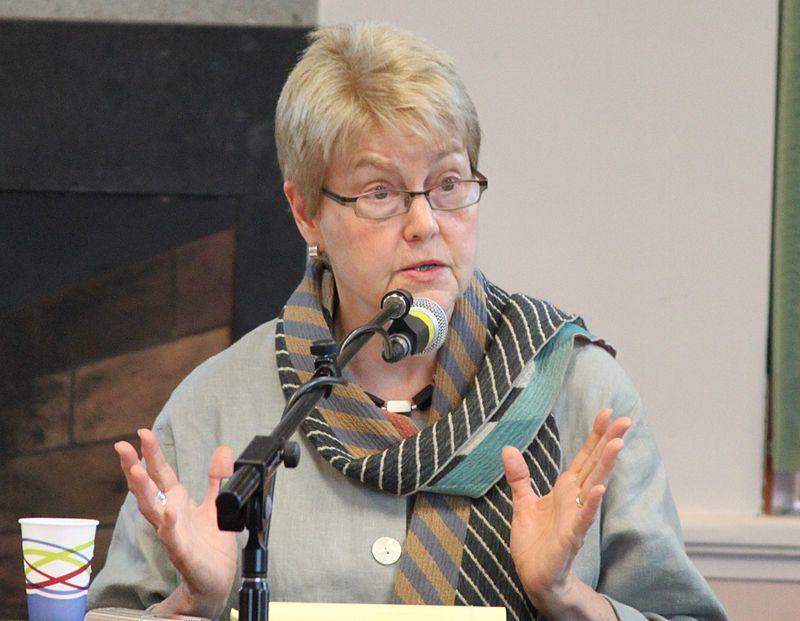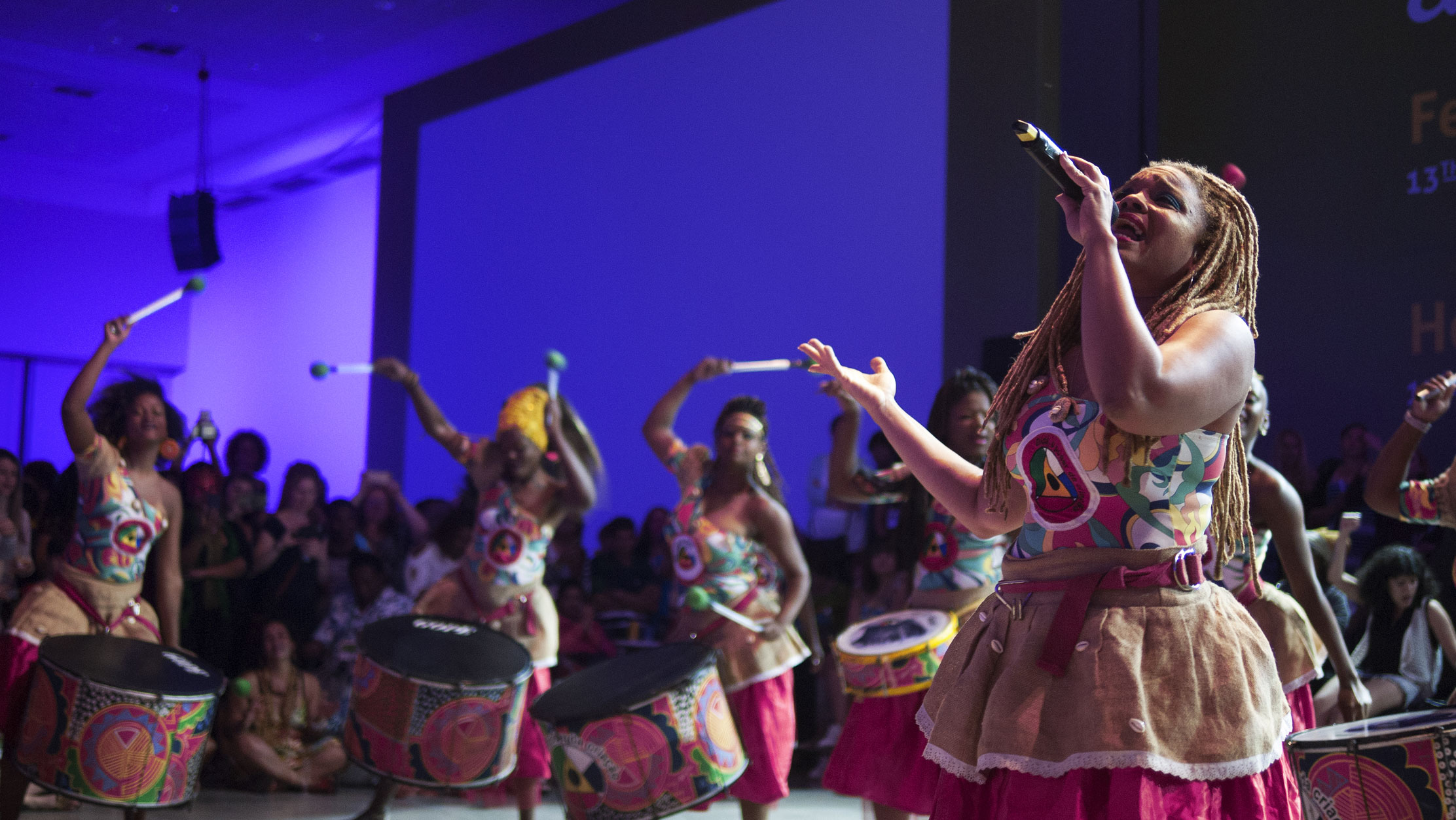FRIDAY FILE – AWID spoke to Charlotte Bunch, Founding Director and Senior Scholar of the Center for Women's Global Leadership, Rutgers University, about the key role the 1993 World Conference on Human Rights in Vienna and the Vienna Declaration and Programme of Action (VDPA) played in advancing a human rights revolution, and why Vienna + 20 needs to highlight both the progress and the continuing obstacles to realization of these rights.
By Susan Tolmay

AWID: How far do you think we have come in the last 20 years in realizing universal human rights for women?
Charlotte Bunch (CB): The recognition that “women’s rights are human rights” at the Vienna World Conference on Human Rights opened doors for women and feminist analysis of human rights in ways that changed both the women’s movement and human rights practice profoundly. The VDPA affirmation of women's rights as full universal rights and identification of violence against women (VAW) as a key issue, initiated a process of integration of women and gender-based abuses into human rights theory and practice that is still ongoing.
“Women’s rights are human rights” was rapidly employed by those working to affirm reproductive and health rights in the 1994 Cairo International Conference on Population and Development, to reinforce women’s socio-economic rights at the Copenhagen Summit on Social Development in 1995 and to produce a Platform for Action framed around human rights at the Beijing Fourth World Conference on Women in 1995. These ideas also took hold at the local and national level where activists held hearings on abuses of women’s human rights in many areas, from armed conflict to poverty and climate change. Addressing issues from honour killings in Pakistan to reproductive rights in Peru, or welfare and housing in the USA, feminists have sought to hold governments accountable through human rights instruments.
Vienna also inspired greater interest in the Convention On The Elimination All Forms Of Discrimination Against Women (CEDAW) with women’s groups writing shadow reports about their governments’ implementation (or lack thereof) and demanding better national legislation as part of their compliance. Laws on violence against women improved dramatically in this time in most areas of the world.
Soon after Vienna, the UN General Assembly adopted the Declaration Against Violence Against Women and the UN Commission on Human Rights (UNCHR) appointed the first Special Rapporteur on Violence Against Women, its causes and consequences, which led to a rich field of work on human rights standards regarding VAW. In 1994, the UNHCR adopted its first resolution on gender integration, which has evolved into regular sessions at the Human Rights Council as well as a wide range of efforts to bring women’s perspectives more fully into work on human rights in all areas. For example, inclusion of gender based persecution and a gender quota for judges in the founding statute of the International Criminal Court broke new ground, as did the first Security Council resolution 1325 on women.
AWID: Despite Vienna and the many other declarations, conventions and POAs, violations of women’s human rights continue, often with impunity. What are some of the new or increasing violations of women’s human rights across the globe?
CB: Advancing women's human rights was on an upward curve after Vienna, but the forces of backlash against such deep change have also been strong, and many challenges remain in implementation. Few governments pay more than lip service to these obligations, and with economic austerity on the rise, resources needed to bring about substantive equality for women are sorely lacking. Action on socio-economic aspects of sex discrimination languishes, as does realization of most socio-economic rights. Most troubling is the growing gap between women whose economic and personal status has improved and those who have been left behind as the gap between rich and poor, connected and powerless, has widened in these 20 years.
The legitimation in Vienna of the urgency of combatting VAW contributed to growing recognition of this concern. Nevertheless, impunity for VAW still rages. The VDPA strongly affirmed that all human rights are universal and indivisible and are the responsibility of the international community to protect. Yet fundamentalist backlash against women's claims to equality, and especially to sexual and reproductive rights, has seized on national sovereignty, culture and religion, as excuses for perpetuating patriarchal discrimination and violence. Growing violence and backlash against women's human rights defenders (WHRDs) has brought some feminists and human rights groups into closer alliances, but it badly needs more attention and resources for progress toward gender justice to continue.
AWID: What role have women’s movements played in addressing some of the issues you describe above?
Women’s movements have realised, particularly in the last decade, how much work it will take to create the conditions for women to be able to exercise their rights. Saying that these rights exist and that VAW violates these rights has certainly given us space on the agenda, but this does not necessarily make them a reality. There is no doubt that women’s movements are playing the lead role in identifying obstacles to women’s rights and naming what it is that keeps women from having real or substantive equality, rather than not just de facto equality, i.e. prescribed by law. Substantive equality requires having access to social and economic rights and the ability to exercise those rights that come with your fundamental livelihood, having access to the political system and being able to defend yourself, whether in court or the community, being able to speak-up and having some kind of power. The work of women’s movements articulate more clearly what it takes to be able to exercise the rights we now accept that women have.
The success at the global level has primarily been defending Vienna, Cairo, Beijing and other international conventions that advanced women’s rights, and defending that language, keeping the concept of women’s rights are human rights, reproductive freedom, VAW, social and economic rights etc on the agenda. But there has been strong backlash against women’s rights at the UN and at the national level in many countries. At Vienna when we gained “women’s rights are human rights”, many of the opponents (of today) didn’t realize what it would mean to put feminism and women’s rights into a human rights framework, and as they’ve seen what this means in terms of reproductive rights, women’s sexuality and women’s right to live free from violence etc, they have become much more opposed than they were even in Vienna. In some ways we gained some of that because we took them by surprise. Now they know, now we face backlash. But we haven’t lost any of the agreements or mechanisms, and in many cases we now have more regional treaties and agreements and consciousness as well.
AWID: As the Millennium Development Goals (MDGs) come to an end in 2015 and a new development agenda is negotiated, what do you see as some of the opportunities and threats for advancing women’s human rights?
There’s a lot to be gained for women in these discussions because in many ways women’s rights were tagged onto the MDGs, they were not built in. Women did, however, succeed in using the MDGs to bring gender perspectives particularly on maternal mortality, HIV and AIDS and women’s education. But now we have the opportunity to shape an entire goal on women’s rights and, in particular, to solidify an agenda with targets specific to that, such as VAW and social and economic rights for women. In 2000 we were really not in those discussions because were still working from the Beijing platform. It was a very closed process and we didn’t realize then that the MDGs were going to be the development framework for the next 15 years. Now we are more aware and we have the opportunity to build a gender perspective and women’s human rights more into the whole agenda.
The threat is that our opponents are also aware of this, and there’s always the chance we could get further marginalized, although I don’t see that happening. What is see right now is that, at least rhetorically, there is an affirmation that women should be at the center of this agenda, and I hope we can use the opportunity to get as many specifics as possible (nationally, regionally and globally) into that agenda from the start.
It is important to remember that 2015 is also the 20thanniversary of the Beijing world conference – so we have Vienna, Cairo, Beijing all having their 20th anniversaries and I believe this will be an opportunity, particularly at regional level (my understanding is that there will probably be regional conferences in 2014 and 2015) to celebrate Beijing. It is an opportunity for women to really spell out what substantive equality, intersectionality and social and political rights, together mean in a very specific way regionally, which is where the action is in terms of new thinking. It would be good not to just think about the MDGs or the Post 2015 process, but also what it means nationally and regionally in the next two years, giving women an opportunity to reassert “women’s rights are human rights” as an ongoing framework, not just something that we achieved once. This needs to frame how we think about the challenges that are still ahead in order to create the necessary conditions for women to realize and exercise their rights fully and equally.
